5.3: Challenge - Bring It On!
- Page ID
- 2375
\( \newcommand{\vecs}[1]{\overset { \scriptstyle \rightharpoonup} {\mathbf{#1}} } \)
\( \newcommand{\vecd}[1]{\overset{-\!-\!\rightharpoonup}{\vphantom{a}\smash {#1}}} \)
\( \newcommand{\id}{\mathrm{id}}\) \( \newcommand{\Span}{\mathrm{span}}\)
( \newcommand{\kernel}{\mathrm{null}\,}\) \( \newcommand{\range}{\mathrm{range}\,}\)
\( \newcommand{\RealPart}{\mathrm{Re}}\) \( \newcommand{\ImaginaryPart}{\mathrm{Im}}\)
\( \newcommand{\Argument}{\mathrm{Arg}}\) \( \newcommand{\norm}[1]{\| #1 \|}\)
\( \newcommand{\inner}[2]{\langle #1, #2 \rangle}\)
\( \newcommand{\Span}{\mathrm{span}}\)
\( \newcommand{\id}{\mathrm{id}}\)
\( \newcommand{\Span}{\mathrm{span}}\)
\( \newcommand{\kernel}{\mathrm{null}\,}\)
\( \newcommand{\range}{\mathrm{range}\,}\)
\( \newcommand{\RealPart}{\mathrm{Re}}\)
\( \newcommand{\ImaginaryPart}{\mathrm{Im}}\)
\( \newcommand{\Argument}{\mathrm{Arg}}\)
\( \newcommand{\norm}[1]{\| #1 \|}\)
\( \newcommand{\inner}[2]{\langle #1, #2 \rangle}\)
\( \newcommand{\Span}{\mathrm{span}}\) \( \newcommand{\AA}{\unicode[.8,0]{x212B}}\)
\( \newcommand{\vectorA}[1]{\vec{#1}} % arrow\)
\( \newcommand{\vectorAt}[1]{\vec{\text{#1}}} % arrow\)
\( \newcommand{\vectorB}[1]{\overset { \scriptstyle \rightharpoonup} {\mathbf{#1}} } \)
\( \newcommand{\vectorC}[1]{\textbf{#1}} \)
\( \newcommand{\vectorD}[1]{\overrightarrow{#1}} \)
\( \newcommand{\vectorDt}[1]{\overrightarrow{\text{#1}}} \)
\( \newcommand{\vectE}[1]{\overset{-\!-\!\rightharpoonup}{\vphantom{a}\smash{\mathbf {#1}}}} \)
\( \newcommand{\vecs}[1]{\overset { \scriptstyle \rightharpoonup} {\mathbf{#1}} } \)
\( \newcommand{\vecd}[1]{\overset{-\!-\!\rightharpoonup}{\vphantom{a}\smash {#1}}} \)
\(\newcommand{\avec}{\mathbf a}\) \(\newcommand{\bvec}{\mathbf b}\) \(\newcommand{\cvec}{\mathbf c}\) \(\newcommand{\dvec}{\mathbf d}\) \(\newcommand{\dtil}{\widetilde{\mathbf d}}\) \(\newcommand{\evec}{\mathbf e}\) \(\newcommand{\fvec}{\mathbf f}\) \(\newcommand{\nvec}{\mathbf n}\) \(\newcommand{\pvec}{\mathbf p}\) \(\newcommand{\qvec}{\mathbf q}\) \(\newcommand{\svec}{\mathbf s}\) \(\newcommand{\tvec}{\mathbf t}\) \(\newcommand{\uvec}{\mathbf u}\) \(\newcommand{\vvec}{\mathbf v}\) \(\newcommand{\wvec}{\mathbf w}\) \(\newcommand{\xvec}{\mathbf x}\) \(\newcommand{\yvec}{\mathbf y}\) \(\newcommand{\zvec}{\mathbf z}\) \(\newcommand{\rvec}{\mathbf r}\) \(\newcommand{\mvec}{\mathbf m}\) \(\newcommand{\zerovec}{\mathbf 0}\) \(\newcommand{\onevec}{\mathbf 1}\) \(\newcommand{\real}{\mathbb R}\) \(\newcommand{\twovec}[2]{\left[\begin{array}{r}#1 \\ #2 \end{array}\right]}\) \(\newcommand{\ctwovec}[2]{\left[\begin{array}{c}#1 \\ #2 \end{array}\right]}\) \(\newcommand{\threevec}[3]{\left[\begin{array}{r}#1 \\ #2 \\ #3 \end{array}\right]}\) \(\newcommand{\cthreevec}[3]{\left[\begin{array}{c}#1 \\ #2 \\ #3 \end{array}\right]}\) \(\newcommand{\fourvec}[4]{\left[\begin{array}{r}#1 \\ #2 \\ #3 \\ #4 \end{array}\right]}\) \(\newcommand{\cfourvec}[4]{\left[\begin{array}{c}#1 \\ #2 \\ #3 \\ #4 \end{array}\right]}\) \(\newcommand{\fivevec}[5]{\left[\begin{array}{r}#1 \\ #2 \\ #3 \\ #4 \\ #5 \\ \end{array}\right]}\) \(\newcommand{\cfivevec}[5]{\left[\begin{array}{c}#1 \\ #2 \\ #3 \\ #4 \\ #5 \\ \end{array}\right]}\) \(\newcommand{\mattwo}[4]{\left[\begin{array}{rr}#1 \amp #2 \\ #3 \amp #4 \\ \end{array}\right]}\) \(\newcommand{\laspan}[1]{\text{Span}\{#1\}}\) \(\newcommand{\bcal}{\cal B}\) \(\newcommand{\ccal}{\cal C}\) \(\newcommand{\scal}{\cal S}\) \(\newcommand{\wcal}{\cal W}\) \(\newcommand{\ecal}{\cal E}\) \(\newcommand{\coords}[2]{\left\{#1\right\}_{#2}}\) \(\newcommand{\gray}[1]{\color{gray}{#1}}\) \(\newcommand{\lgray}[1]{\color{lightgray}{#1}}\) \(\newcommand{\rank}{\operatorname{rank}}\) \(\newcommand{\row}{\text{Row}}\) \(\newcommand{\col}{\text{Col}}\) \(\renewcommand{\row}{\text{Row}}\) \(\newcommand{\nul}{\text{Nul}}\) \(\newcommand{\var}{\text{Var}}\) \(\newcommand{\corr}{\text{corr}}\) \(\newcommand{\len}[1]{\left|#1\right|}\) \(\newcommand{\bbar}{\overline{\bvec}}\) \(\newcommand{\bhat}{\widehat{\bvec}}\) \(\newcommand{\bperp}{\bvec^\perp}\) \(\newcommand{\xhat}{\widehat{\xvec}}\) \(\newcommand{\vhat}{\widehat{\vvec}}\) \(\newcommand{\uhat}{\widehat{\uvec}}\) \(\newcommand{\what}{\widehat{\wvec}}\) \(\newcommand{\Sighat}{\widehat{\Sigma}}\) \(\newcommand{\lt}{<}\) \(\newcommand{\gt}{>}\) \(\newcommand{\amp}{&}\) \(\definecolor{fillinmathshade}{gray}{0.9}\)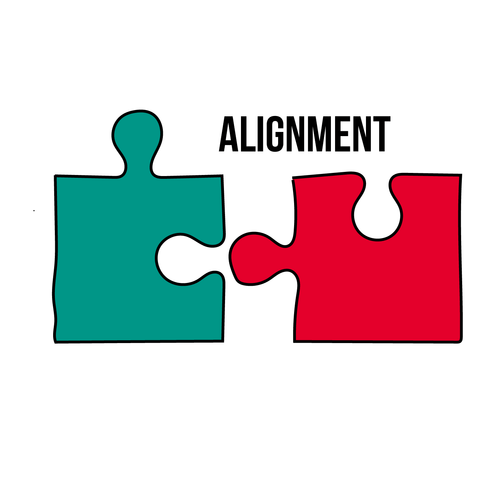
National Health Education Standards (NHES)
- 7.12.1 Analyze the role of individual responsibility for enhancing health, such as when dealing with challenges.
Wellness Guidelines
- Decrease negative perception of challenges.
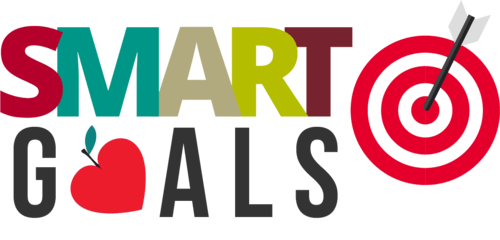
- Instruction: In a group or think pair share format, have participants discuss the following questions. Acknowledge those who have progressed toward their goal(s) and encourage anyone who wants to change or modify their goal to get 1:1 support.
- Share: Let’s discuss our SMART Goals.
- How is it going with your current SMART goal?
- What are some ways you can improve progress toward your goal? (Grows)
- What are some ways you are doing well with progress towards your goal? (Glows)
GUIDELINE: Decrease Negative Perception of Challenges
- Share: What guideline do you think is related to today’s lesson? Who has a SMART Goal related to this guideline?
- Instruction: Select one activity.
- Guideline Popcorn: The group lists all 8 guidelines rapidly in popcorn format.
- Guideline Charades: Divide participants into groups and assign each a guideline. Each group has to silently act out the guideline for the rest to guess.
- Two Truths and One Lie:
- Truth 1: Challenges happen in life every day.
- Truth 2: Challenges help us learn things about ourselves to grow.
- Lie: By ignoring challenges in life, you reduce the stress you experience. For more information about the “Lie,” you can visit this website: www.incourage.me/2013/11/the-price-of-ignoring-our-problems.html.
- Questions to discuss and/or journal:
- What are some of the biggest challenges you have faced?
- Do you enjoy overcoming challenges or do you prefer things to be easy? Why?
- Do you think that the challenges you have faced over your life have made you a better or worse person?
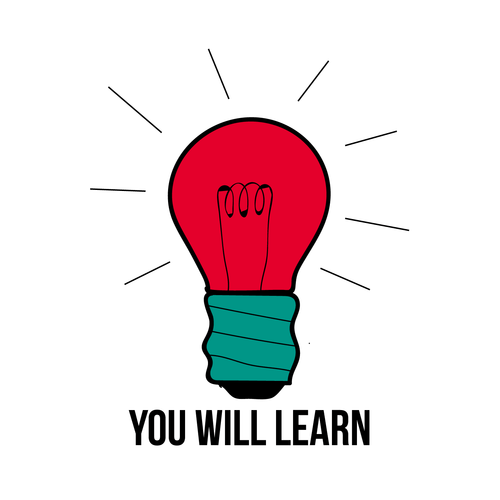
- How challenges can be opportunities for growth by having coping strategies.
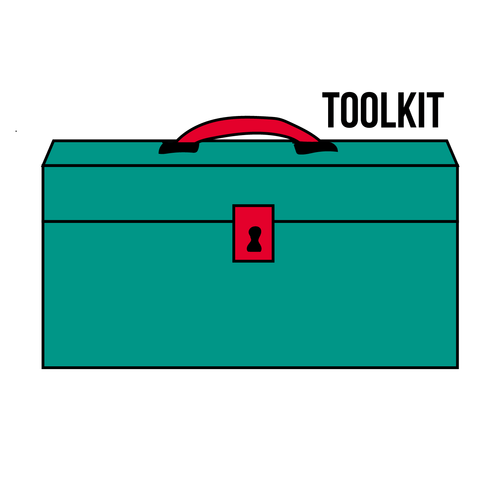
- Worksheets
- Slide presentation
- Scenarios printed and cut individually
- Four inflated, but slightly less filled, beach ball or balloons or balloons for each group
- Student journal or paper for writing
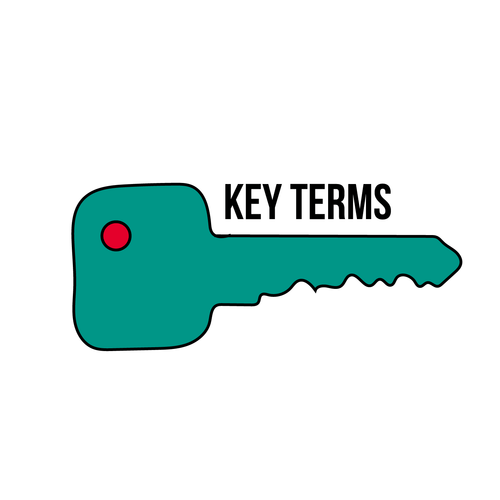
[As defined by Merriam-Webster Learner’s Dictionary, n.d.; Harvard University’s Center on the Developing Child, n.d.]
- Challenge: A difficult task or problem; something that is hard to do.
- Resilience: The ability to overcome serious hardship.
- Cope: To deal effectively with something difficult and to try and come up with solutions.
- Outcome: something that happens as a result of an activity or process.
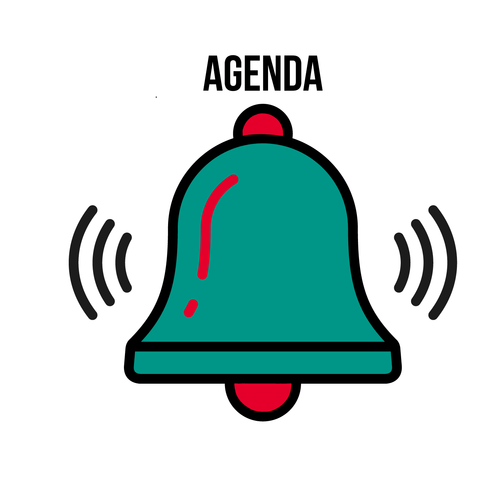
- Do Now
- The Seesaw
- Act It Out
- Don’t “Pass” on a Challenge!
- Exit Ticket
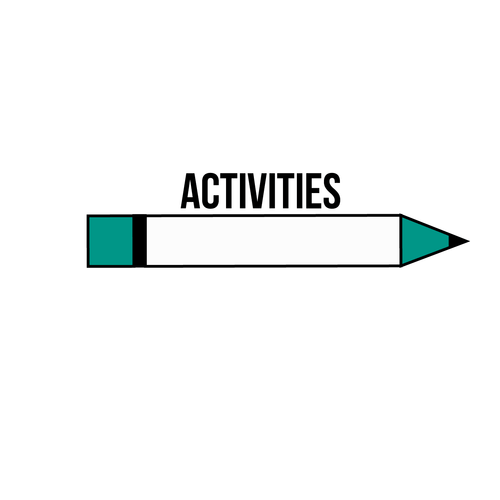
Do Now: Guess Who
- Instruction:
- Read the description of challenges that different famous individuals have faced and ask the participants to guess who it is.
- Tip: Include slides in your presentation to facilitate this activity. The slides can list the description of the challenges on each slide, or verbalize the challenges and have the slide with the correct name after participants have tried guessing or guess the correct name. The names can be adapted to include well-known individuals the group relates to and admires.
| Celebrity | Clues |
| Abraham Lincoln |
|
| Oprah Winfrey |
|
| Michael Jordan |
|
|
Justin Bieber |
|
- Share:
- What is something that all these people have in common? They all didn’t let the challenges they experienced prevent them from being successful.
- What is a challenge? It is a difficult task or problem or something that is hard to do.
Good to Know: The Seesaw
- Share:
- Most people think about a challenge as something negative.
- Instead of thinking about challenges in a solely negative way, try viewing them as opportunities to help you experience personal growth.
- Once you realize life is a series of small and big challenges that you have to navigate, you can approach and tackle each of them with confidence knowing you can get through it and come out stronger on the other side.
- Challenges can often be out of your control and can happen anytime.
- However, what is within your control is how you react to the challenge. The more positively you respond, the more you can build your resilience, which means to adapt to and overcome challenges.
- We can think of our experience with challenges like a seesaw.
- A challenge can strike anytime that may tip you negatively, but there are positive choices or coping mechanisms you can use to balance yourself again (Harvard University’s Center on the Developing Child, n.d.). Optional Video: https://www.youtube.com/watch?v=xSf7pRpOgu8
- Everyone handles challenges differently, so it is important to learn your own coping style and not compare it to others. You may experience some negative outcomes at first. The outcome means something that happens as a result of an activity or process.
- However, it is important to learn how to cope which means to deal with problems and difficult situations and coming up with solutions.
- However, some challenges may too great to handle on your own. In these situations, reach out to friends, trusted adults for advice, family members, or seek professional guidance.
- Instruction:
- As participants share answers to the following questions, record answers on a projector, board or flipchart paper.
- What are some examples of challenges that you face?
- How can challenges cause negative outcomes?
- How can you cope to help yourself find balance again?
- Possible responses are included in the chart below.
- As participants share answers to the following questions, record answers on a projector, board or flipchart paper.
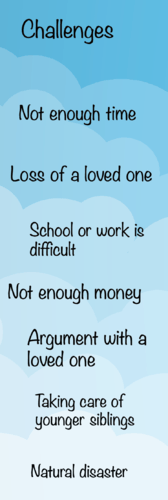 • Center for Disease Control and Prevention. (2015). Coping With Stress. Retrieved From: www.cdc.gov/violencepreventi...ress_tips.html
• Center for Disease Control and Prevention. (2015). Coping With Stress. Retrieved From: www.cdc.gov/violencepreventi...ress_tips.html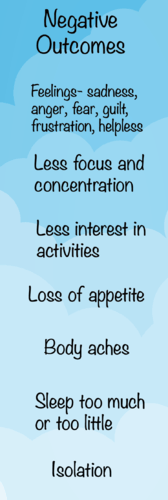 • Center for Disease Control and Prevention. (2015). Coping With Stress. Retrieved From: www.cdc.gov/violencepreventi...ress_tips.html
• Center for Disease Control and Prevention. (2015). Coping With Stress. Retrieved From: www.cdc.gov/violencepreventi...ress_tips.html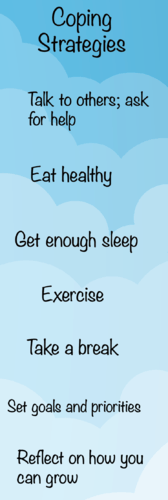 • Center for Disease Control and Prevention. (2015). Coping With Stress. Retrieved From: www.cdc.gov/violencepreventi...ress_tips.html
• Center for Disease Control and Prevention. (2015). Coping With Stress. Retrieved From: www.cdc.gov/violencepreventi...ress_tips.htmlReal World Relevance: Act It Out
- Instruction:
- Each group will be given a scenario and have five minutes to think of a skit to present to the group.
- It should be appropriate and highlight a coping strategy to use when responding to the challenge.
- Remember the seesaw: a positive reaction can help balance the negative outcome from a challenge.
- Scenario 1: You threw a huge birthday party, and you intentionally did not invite one of your classmates/coworkers/family members. People are talking about how awesome it was at lunch, but they forget that you didn’t invite everyone. The person left out stops the conversation to ask you about the party. You feel a little uncomfortable. What do you do?
- Scenario 2: You go to a party. You realize from afar that your significant other (wife/husband/girlfriend/boyfriend/partner) is talking to someone close it seems “too close for comfort.” You feel jealous and angry. What do you do?
- Scenario 3: You are hanging out in the lunchroom one day when you overhear your classmates/ coworkers making fun of you. They do not notice that you are there. You feel embarrassed and hurt. What do you do?
- Scenario 4: You’re driving home from the store, and suddenly, a family friend backs up and smashes the front end of your car as you’re exiting the parking lot. He had four other people in the car with the music blaring. Even though his car is damaged too, he explains that he doesn’t have money to fix it. Your car looks pretty bad, and you know you can’t afford to fix the damage either. What do you do?
- Scenario 5: You applied for a leadership position, and you know you were qualified. When the list is posted showing new members, you realize you didn’t make it. You’re confused. All your friends made it, and it’s all they are talking about. What do you do?
- Scenario 6: You tell a trusted friend something personal that just happened to you. The next time you get on social media, you notice another friend posted something relating to your secret. You only told the one person that you trusted. What do you do?
- Scenario 7: You and your friend worked together on a very important project. You get feedback from your teacher/boss. You find out that your friend received many positive comments, while you only received criticisms. You feel it is unfair and feels What do you do?
- Scenario 8: At lunch with a large group of your friends, one of them makes jokes about what you said so that the rest can hear. Some laugh, some join in, and others pretend to ignore the situation and not hear the comments being made. What do you do?
- Share:
- What did you learn about yourself from doing this activity?
- Responses may include:
- I know/don’t know how to handle uncomfortable/difficult situations.
- I learned how I want to handle uncomfortable/difficult situations.
- I don’t always know what to do or even what I want to do.
- There may be many situations where I may have expectations that aren’t met.
- What kind of personality traits do you have that helped you to get through that challenge in the scenario?
- Responses may include:
- Sense of humor
- Resilience
- Support from friends/family
- Talking things through
- Thinking positively
- All of these scenarios are challenges that many of you may have faced or will face in your life.
- What about the challenge of presenting in front of a group of people? Another huge challenge or fear that many people have is public speaking. Yet, everyone just got up in front of the group and presented.
- What did you learn about yourself from doing this activity?
Hands-On: Don’t “PASS” on a Challenge
- Instruction:
- In this activity, participants are being progressively challenged to keep beach balls or balloons in the air as a group.
- The activity begins with the assigned group leader throwing one beach ball or balloon in the air and allowing participants to keep the ball or balloon from touching to the ground for one or two minutes.
- After a minute or two, a second beach ball or balloon is added. Again, allow one or two minutes of play.
- Add a third and fourth beach ball or balloon over the course of several minutes.
- The final level of this challenge is for the group to maintain all four balls or balloons in the air while working as a team and not letting any balls touch the ground.
- Share:
- Now we are going to explore how this activity relates to facing challenges.
- What was difficult about this activity?
- Didn’t know where the balloon or ball was going to go
- Too many balloons or balls
- Too fast
- Never played before
- Didn’t understand the rules
- Not everyone participated
- How could you have made the activity easier?
- Call out the person’s name who you are going to pass to
- Come up with a passing pattern
- Catch and throw
- Fewer balloons or balls
- Pass at a slower pace
- Play again to get comfortable
- Hear the rules again
- Play as a team
- Share:
- If we think of the balloons or balls as challenges we may face in life, we may experience similar difficulties that you just shared (feeling overwhelmed, confused, frustrated, stressed, etc.).
- However, we can make facing real-life challenges easier just like how we made the activity easier: communicating with someone, focusing on one challenge at a time, slowing down, having patience, never giving up, and asking for help from others.
- Figuring out how to make the activity easier serves as an example of personal growth.
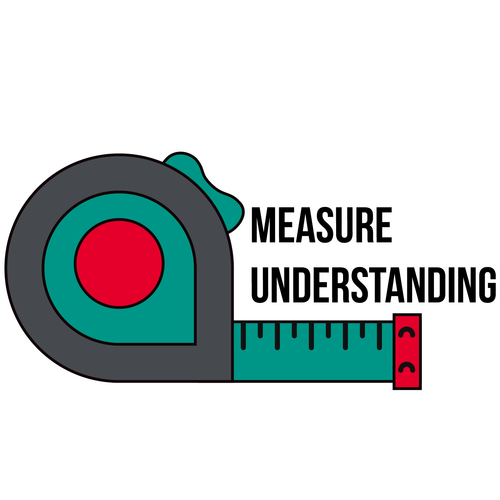
Exit Ticket: Challenges in My Life
- Instruction:
- Participants have the opportunity to reflect on this lesson personally.
- Share a personal challenge you face and model how to think through the questions below.
- Then, participants self-reflect, journal, or draw in response to the following questions.
- Read each question out loud and clarify, as necessary.
- What is a challenge you are currently experiencing in your life?
- How are you currently responding to this challenge? For example, are you facing it? Avoiding it? Giving up?
- What is an example of a coping strategy you could have used to respond to this challenge?
- How do you think you can grow as a result of this challenge?
- Who are some people you can talk to about this challenge? For example, someone in your family, at school, work, neighborhood, or another trusted an adult.
Bibliography
- American Psychological Association. (n.d). Resilience guide for parents & teachers. Retrieved From: www.apa.org/helpcenter/resilience.aspx
- Centers for Disease Control and Prevention. (2015). Coping With Stress. Retrieved From: www.cdc.gov/violenceprevention/pub/coping_with_stress_tips.html
- Harvard University’s Center on the Developing Child. (n.d.). Resilience. Retrieved From: https://developingchild.harvard.edu/science/key-concepts/resilience/
- Kaufman, SB. (2018). The role of luck in life success is far greater than we realized. Retrieved From: https://blogs.scientificamerican.com...n-we-realized/
- Merriam-Webster Learner’s Dictionary. (n.d.). Challenge. Retrieved From: http://learnersdictionary.com/definition/challenge
- Merriam-Webster Learner’s Dictionary. (n.d.). Cope. Retrieved From: http://learnersdictionary.com/definition/cope
- Merriam-Webster Learner’s Dictionary. (n.d.). Outcome. Retrieved From: http://learnersdictionary.com/definition/outcome
- https://blogs.scientificamerican.com...n-we-realized/

- Dr. Sood. (2015). A very happy brain. Retrieved From: https://www.youtube.com/watch?v=GZZ0zpUQhBQ
- Absolute Motivation. (2014). Michael Jordan- The drive. Retrieved From: https://www.youtube.com/watch?v=uB5Pt_8cr6Y
- OWN. (2011). Oprah on taking responsibility for your life. Retrieved From: https://www.youtube.com/watch?v=Dp_cmLfJZ1w
This lesson was created in partnership with Albert Einstein College of Medicine Department of Epidemiology and Population Health with funding support by the National Institutes of Health NIDDK Grant R01DK097096.

